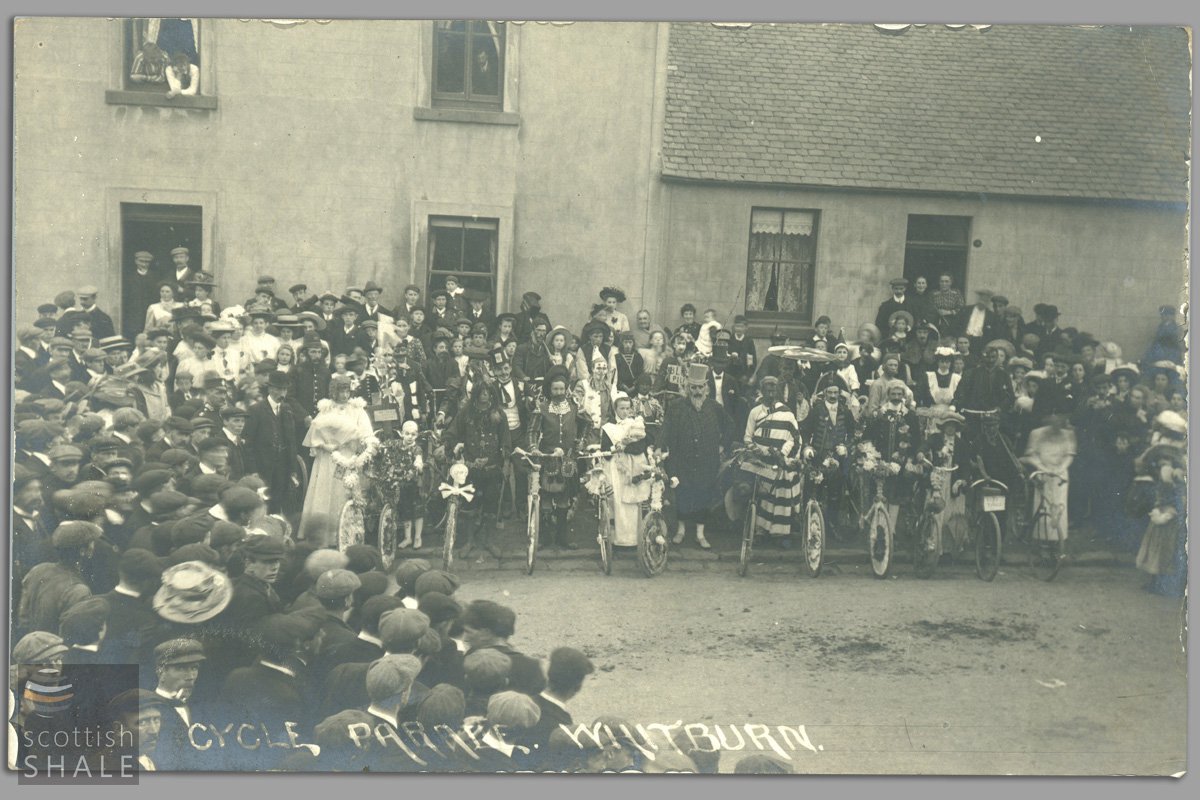The Whitburn Cycle Parade
Tam o’Shanter rubs shoulders with a suffragette
F22022 - first published 8th December 2022
As the grand finale to the Whitburn Gala Day in 1909, the Whitburn Public Band marched through streets lined with happy revellers, followed by a curious trail of costumed characters on bicycles. At 7pm on the 26th of June, this strange procession peddled off from the Public School, wobbling and weaving their way down the street while the crowds laughed and cheered. There was a tramp and a pirate, Robin Hood and Dick Turpin, Convict 99 and KCB, as well as a host of other strange characters. KCB, it was explained, stood for Knight Commander of the Bath, represented by one man clad head to foot in towels with a sponge on his head and a bath brush in his hand.
This was Whitburn’s first Cycle Parade. It was an idea that had been borrowed from other gala days but had naturally been much improved by Whitburn folk, who boasted that “nothing in Bathgate was anything like the Whitburn parade”. Fourteen riders took part, and while prizes were awarded, it was decided that everyone was a winner.
The Cycle Parade proved so popular that it was decided to do it all again, little more than a month later, in aid of the Boys Brigade. On 1st August 1909 an al-fresco music festival was held in Mr. Burn’s field, just off Manse Road, where the Public Band played, and the Whitburn Musical Association presented a programme of choral performances. Once the musical entertainment had come to an end, the fancy dress cycle parade began, pedalling up and then down Main St. behind the band. This time there were 35 competitors, including most of those who had entertained at the gala, along many more that had been inspired by it. Prizes were awarded to bikes and their riders under three categories; “beautiful”, “grotesque”, and “practical”
Second time around, the commercial opportunities of the event were not lost on local photographers who recorded the festivities and quickly produced souvenir postcards. Our example, probably produced by Livingston photographer Robert Braid, is postmarked just a few weeks after the event. Local papers gave full accounts of the proceedings along with the names of most participants. Once the judging was over, John Hamilton, (who had pedalled as the Merry Widow on the fair day), was awarded first prize in the “beautiful” section as the Belle of the Ball.
We’ve tried to cross-reference the newspaper accounts to the postcard in order to put names to faces. Most of the prize-winners, (standing at the front of the group), can be identified, but it is less clear who is who among the rest of the field. Some represent popular figures of the day that are largely forgotten; however within the crowd there’s a nurse, a clown, a gypsy boy, a Senegalese, a street artist and Dick Turpin. Somewhere Tam o’Shanter rubs shoulders with a suffragette. A group also dressed as miners, which probably didn’t require a lot of effort or imagination
The Cycle Parade became a Gala Day favourite, getting bigger and more bizarre every year. Then came the first world war, and everyone lost their appetite for this kind of fun.
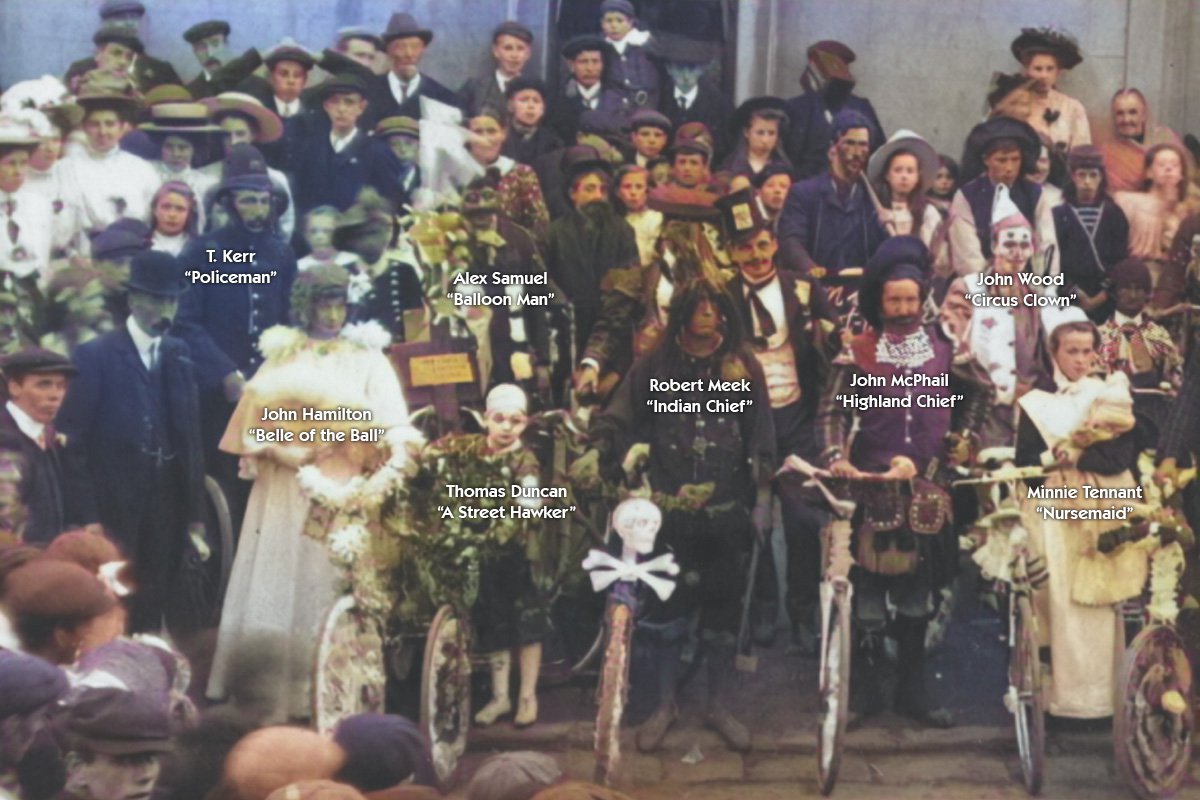
After a little digital magic, we've brightened up this part of the image and added some names
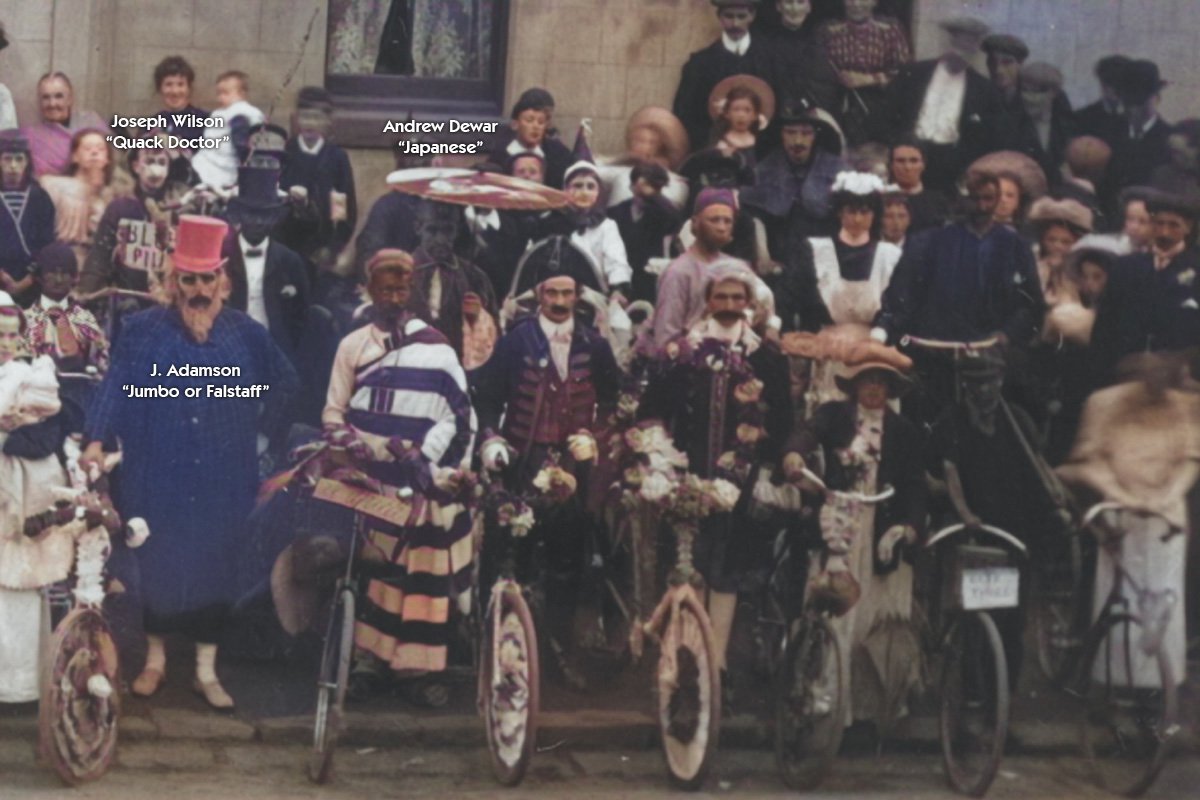
After a little digital magic, we've brightened up this part of the image and added some names
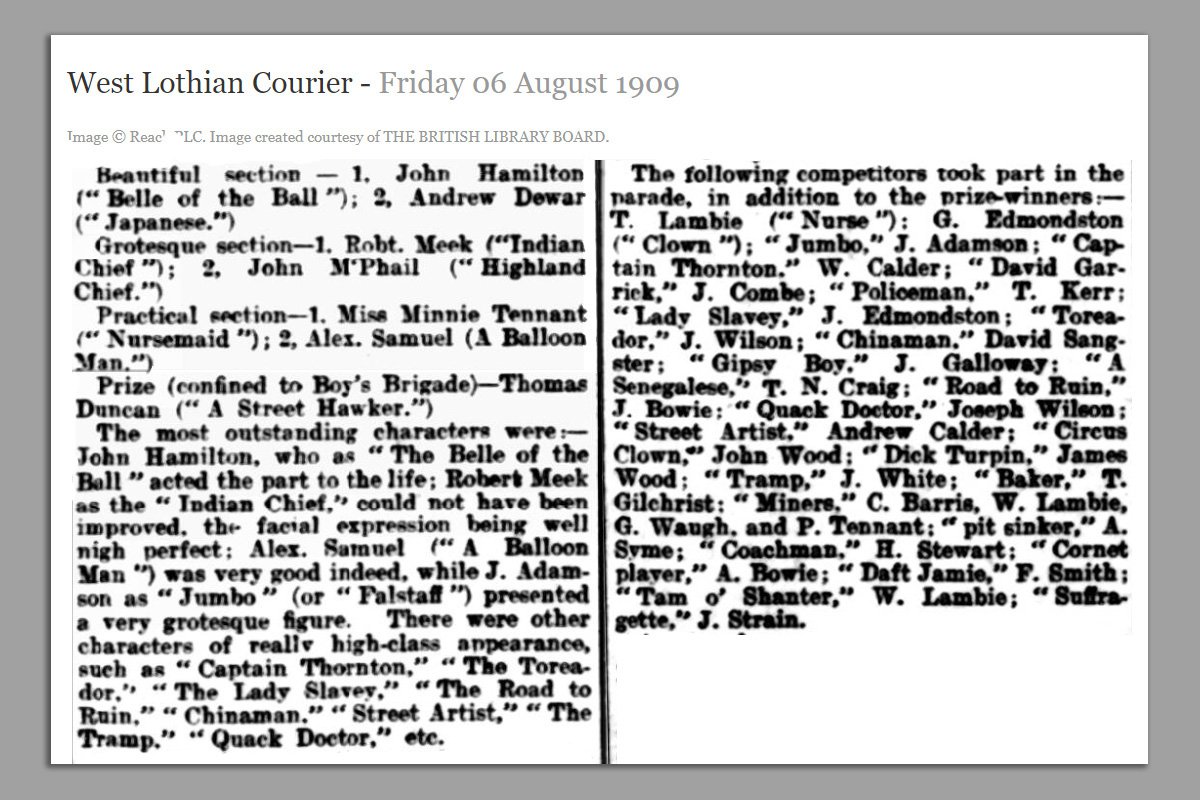
The full cast list
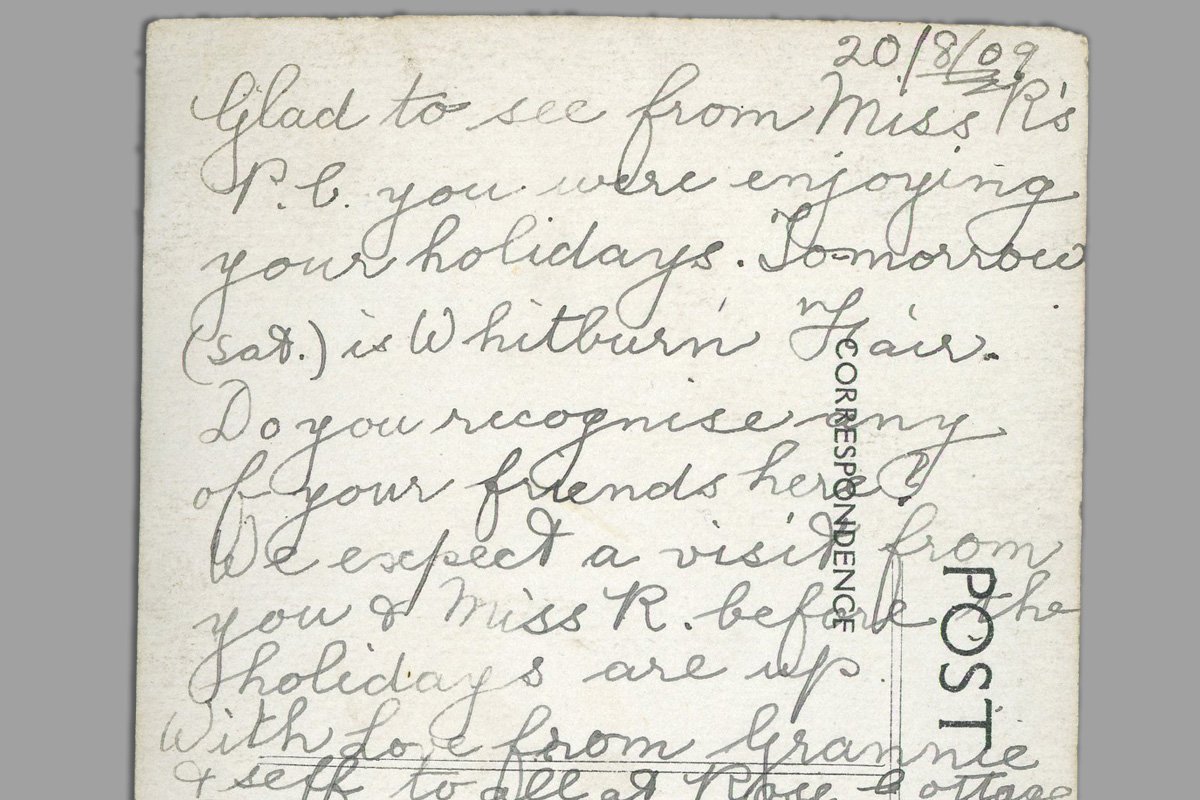
Greetings on the back of the card. We're baffled by the reference to Whitburn fair being tomorrow?
